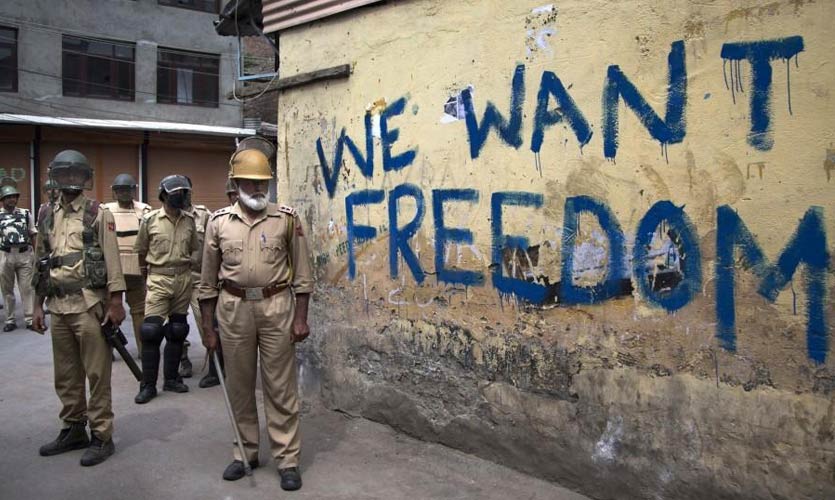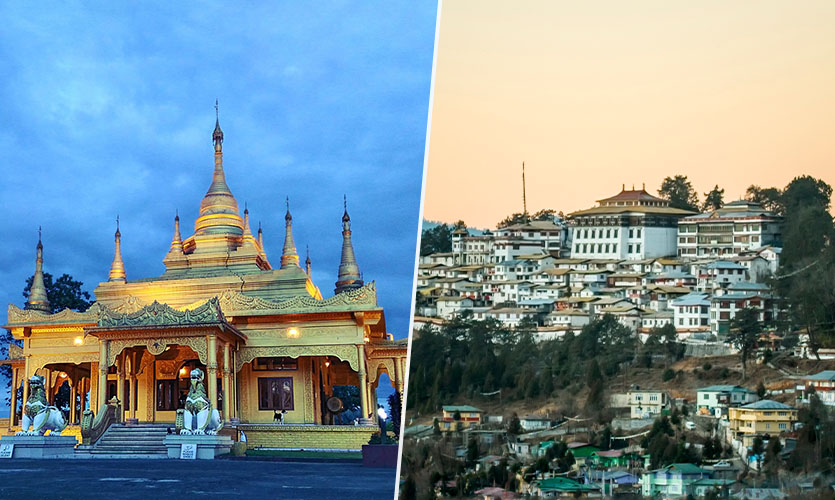It started with a rumour. The trigger of rumours arose when the Prime Minister Narendra Modi-led government started to deploy additional paramilitary troops in J&K. The reasons were similar to those usually cited such as “precautionary measures” and “national security”. However, as news about the house arrest of former chief ministers – Omar Abdullah and Mehbooba Mufti – started flashing on television sets and social media, everyone saw the historic move of the reorganisation of the state, abrogation of Article 370 and amendment of Article 35A come forth.
After the announcement, two years ago on this day, Indians and non-Indians around the world discussed Kashmir extensively. This move heavily divided the masses. While some thought it was a historic move, others termed it a historical blunder by the ruling government. There is never really a clear picture about what exactly goes on in J&K with recurring media blackouts and internet bans throughout the state.
As per the constitution, Article 370 granted an autonomous status to J&K, while Article 35A provided special rights and privileges to the citizens of the state.
J&K acceded to India in October 1947, post-independence, which was contested by Pakistan leading to the Kashmir conflict. Kashmir has been a point of conflict between India and Pakistan ever since, with both nations constantly going to three wars to gain complete control of the region.
With the August 5 changes, Kashmir no longer enjoys a separate constitution, and abides by the Indian constitution. It also means that the region was opened for access to every citizen from outside the state, allowing them to buy property, sell, settle down, commence business, make a living, and so on. Article 370 allowed the state to have its own constitution, independence in their internal and external government affairs, and a separate flag, which were all taken away.
What Were The Claims By The Modi-led Government?
Home minister Amit Shah, believed to be the brains behind this move said, “Article 370 and 35A damaged the people of Jammu and Kashmir. It is because of these sections that democracy was never fully implemented, corruption increased in the state, and that no development could take place.” He also went ahead and said that history was “corrected” by scrapping the sections. “Since the responsibility of writing history was in the hands of the same people who had committed mistakes, so as a result true facts were hidden. I think time has come that correct history is written and presented before people,” reported ANI.
Apart from the agenda of development in Kashmir set by the government, it also promised to implement affirmative action policies in the state, including quotas in education institutes.
Former minister of finance, the late Arun Jaitley had tweeted, “The government’s decision is a monumental decision towards National integration. The decision of the government will help the people of J&K with more investment, more industry, more private educational institutions, more jobs, and more revenue.”
Are The Locals Happy?
Mufti, in an interview with the BBC, said, “Those who had participated in India’s democracy had been pushed to the wall.” She said the decision of scrapping the two sections betrayed Kashmir’s decision to align with India in 1947.
Statistically, as per the Economic Times, J&K witnessed a spike in stone-pelting incidents in 2019 as compared to 2018, recording 1,999 such cases of which 1,193 took place after August 5.
“As an educated unemployed Kashmiri I feel Article 370 should be valid only in the dark red area. By removing it from all other areas of Jammu and Kashmir we can at least allow educated, productive and peaceful Kashmiri Muslims like me to find jobs and earn a decent living and live a peaceful life while living closer to home,” read an anonymous comment.
However, Nazir Masoodi, NDTV’s Srinagar Bureau Chief, said, “The promised thousands of jobs have not materialized. In fact, J&K is facing one of its worst-ever employment crises.” He said, according to the Kashmir Chamber of Commerce and Industries (KCCI), more than 4 lakh people have lost their jobs in Kashmir after August 5, 2019.
When the Sparrow News spoke to a local resident and former journalist belonging to the Kashmiri Muslim community, he said on the condition of anonymity, “It may have sounded like a huge thing for people outside Kashmir regarding the removal of these sections. In reality, there is no difference between then and now. We still don’t have freedom, employment, and more importantly hope. People here feel betrayed by India, Indian authorities, and everyone outside the state who rejoiced at this decision.” He further added, “There are no local representatives for us now. From authorities to public servants in governance and military, the people from outside the state. They are outsiders for us!” He even mentioned the absence of political activities in the Kashmir area as everything is still under presidential rule, managed by the Centre.
Moreover, Kashmir is still mostly under lockdown and internet disengagement given security concerns. “Imagine having a shutdown for 400 to 500 days at a go and then when we are let out. All we do is search for jobs to feed our families! This is how Kashmiris spend their time now and then, hopelessness is all we have,” added the former journalist, who resides in Srinagar.
Agreeing to his statement, another local added, “The region has rarely seen any glimpse of democracy, other than a futile local body election that was held in 2020. The region is being directly monitored by the Centre in an authoritarian setup – introducing draconian laws like UAPA where several journalists and civilians have been detained and branded as anti-nationals.” She further added, “Since August 5, the insecurity has only intensified with regards to civil rights of Kashmiris, their land, job opportunities, representation, the identity, and the culture.”
Meanwhile, another journalist feels that everyone is too ingrained into defining the political outlines, ignoring the communities. “Even if our central leaders swear by the safety of Kashmir, the local leaders continue to create havoc while people’s sentiment seems to remain the same,” said the journalist, herself belonging to the Kashmiri Pandit community, on the condition of anonymity. She continued, “Nobody wants to abandon their ideologies even after all these years for the sake of the general Kashmiri people. Neither the nationalists nor the seperatist leaders! This shows they are least interested when it comes to taking action in order to create an environment of co-existence.”
Read more: Revisiting J&K’s Reorganisation And Article 370
Centre’s Plans
This year, the union finance minister Nirmala Sitharaman unveiled a ₹1,08,621 crore budget for J&K of which, ₹39,817 crores were allocated for capital expenditure and ₹68,804 crores for revenue expenditure. As per the Saudi Gazette, the Centre is also coordinating with state governments to initiate projects that were long pending in the valley, including two large-sized IT parks spread over half a million square feet.
Reportedly, last year, the government also approved ₹60 billion for a multi-purpose irrigation cum power project in J&K’s Kathua district. Other programs by the government includes a release of ₹80,000 crores under the Prime Minister’s Development Package of which, a fundamental amount will be used to set up an Indian Institute of Technology (IIT), an All India Institute of Medical Sciences (AIIMS) and an Indian Institute of Management (IIM). Five new medical colleges at Baramulla, Kathua, Anantnag, Doda and Rajouri have been approved. In order to establish transparent governance, the centre has also planned to bring in the District Development Councils (DDC) and Block Development Council (BDC) elections.










